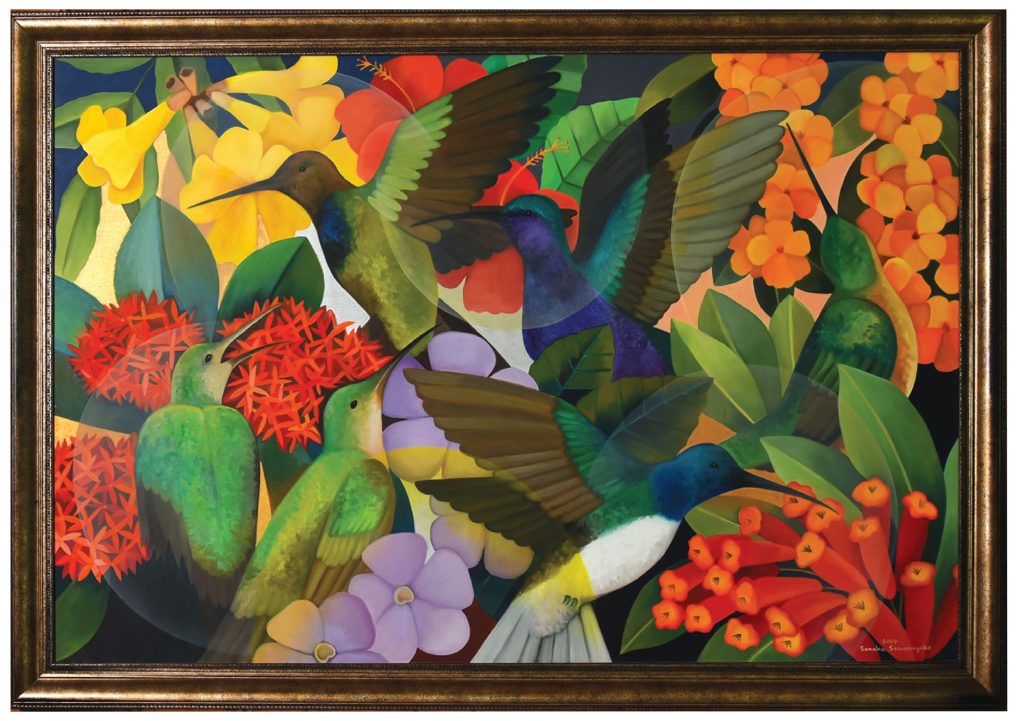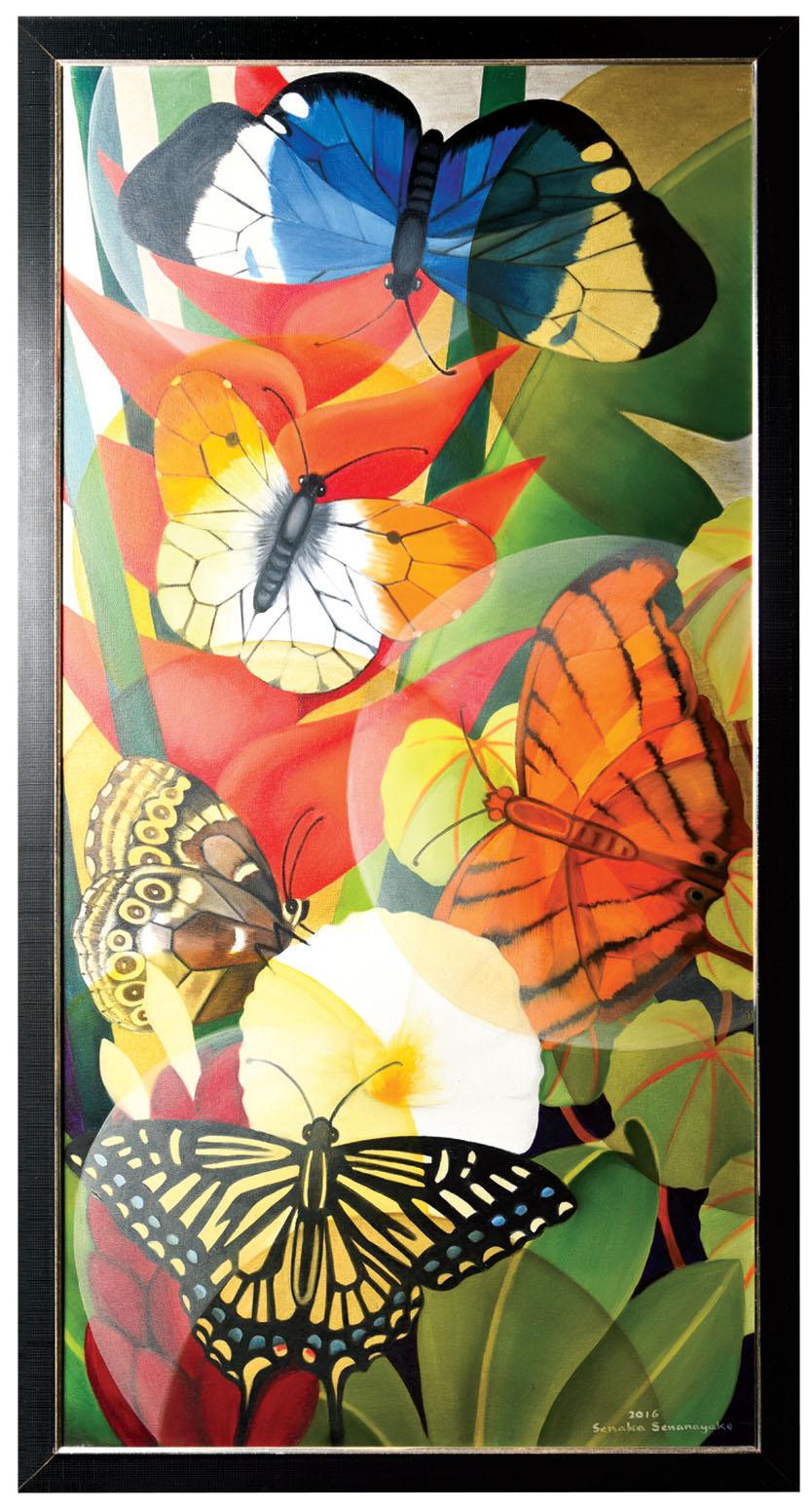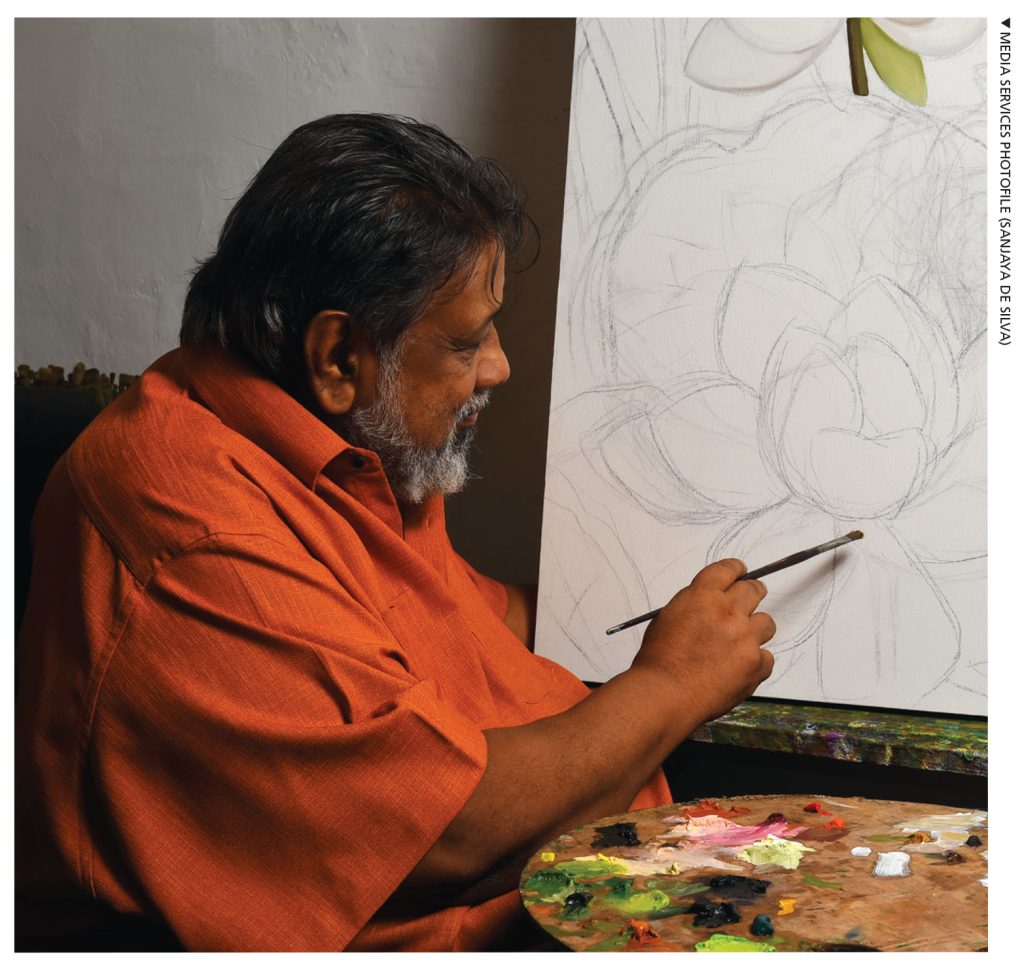
THE BIG IDEA
Senaka Senanayake says he’s been lucky to be able to paint – and live off it
Q: How would you describe your work – and what has influenced your style over the years?
A: I have been painting for almost 60 years and over the years, my style has changed. As a child, it was vastly different when I was in school and university, which was very different to my present style.
My earliest style was a reaction to life and the people of Sri Lanka. I painted what I saw around me.
When I went to Yale University on a full scholarship, my formal training in art and architecture began. There, my style changed as I came to understand what art and painting are about.
I began learning different styles and ways of approaching art; and I was influenced by Cubism, creating fairly abstract paintings that were quite different from my current style.
The social movements taking place in the US around 1968-72 were, in my opinion, some of the most exciting times – from Woodstock to the hippie culture and even the chaos of the Vietnam War. They were major eye-openers for me as I’d never experienced them before.
Q: What are some of the challenges you’ve faced as an artist?
A: There was parental pressure to obtain a professional degree. Being an artist wasn’t considered a profession but more of a hobby. That’s where architecture came in.
The degree from Yale wasn’t a professional one so I had to attend an architecture school that offered a similar degree. I gained entry into Clare College at the University of Cambridge.
But I didn’t want to be an architect – I wanted to keep painting…
Taking a year off before going to Cambridge, I returned to Sri Lanka to see if I could make painting my profession. Still, I wasn’t allowed to stay home and paint, and was pushed into a job at the Ceylon Ceramics Corporation.
It didn’t last long…

I got lucky with more exhibitions and received positive response… so I continued to paint.
The next challenge is basic survival: to be able to make a living off art is an opportunity not many get. Many artists have second jobs simply to supplement their income. I’ve been lucky to be able to paint and live off it.
Q: What do you draw inspiration from?
A: The latest phase of my life has lasted 15 years, influenced a lot by the world’s environmental crisis.
Being made aware of the destruction that Sri Lanka’s rainforests were facing through trips to the forests inspired me to do something about it. Using my expertise as an artist, I began using my art to influence the younger generation to bring about change.

My series on rainforests has two approaches: negative and positive.
The negative shows destruction while the positive displays beauty. Nobody would be interested in looking at something dead and dying so I paint the beauty of nature.
People started seeing things that they’d never imagined existed. Children especially found it hard to believe that these scenes and animals can be found in real life. It was simply a matter of not being exposed to them.
So my crusade is about raising awareness among the younger generation. I often find that many children visit my exhibitions and I like to talk to them in the hope of inspiring them.
I believe the world is gradually heading towards awareness but it’s very slow – especially in Sri Lanka where we have destroyed so much.
Q: And what message do you strive to communicate?
A: I try to tell young people that there is enormous potential in art as long as you’re creative.
In any creative field, unless you have something new, you can’t make it big. You must come up with a new idea – something that hasn’t been done before. This has to be something in your mind that you can build on without imitating someone else’s idea. It should be something original that will see success.
Having interests and capabilities doesn’t necessarily mean that everyone has equal talent. That’s something everyone in the creative field has to understand. We all must have some talent in us but it’s a question of recognising what that is.

Q: In your opinion, what role does art play in society?
A: Art plays a huge role because of its ability to create awareness. Moreover, art can be used as a medium to get messages across to society while creating an understanding of what life is about.
It’s a wonderful way of communicating.
When I exhibit art on nature, people get excited about the environment. It raises awareness, and initiates conversations and action.
Visuals are the only way I can get my message across. Some use words while others might use music.
Q: And finally, what is your message to young aspiring artists?
A: Believe in yourself and go for it!
There will be pressure from parents and teachers to follow the regular path but it’s always good to do what you think you want to do. You may not be the best in the world or the most successful but if you enjoy it, you should do it.
If you believe in yourself, you will make it.
FACT FILE
FAMILY
Wife – Jennifer
Two children
Three grandchildren
SCHOOLING
Royal College
QUALIFICATION
BFA (Yale University)
FAVOURITE ARTISTS
Paul Gauguin
Pablo Picasso
Leonardo da Vinci
FAVOURITE HANGOUTS
Little coffee shops
Restaurants where different types of food can be tried out
CV IN A NUTSHELL
Senaka Senanayake hosted his first exhibition in Colombo in the late 1950s. He then held his first international one-man show in New York City – at the age of 10.
He continued to paint and as a teenager, held countless exhibitions in Sri Lanka, and Europe, the US and Asia. Senanayake counts more than 100 solo shows to his credit – in addition to group shows in Europe, China, Australia, Japan, Singapore, South Korea and Egypt.
Having established himself as one of the region’s most revered living artists, Senanayake’s recent work is inspired by the plight of Sri Lanka’s rainforests. His home in Colombo has a vibrant tropical garden where he draws inspiration for his work.
